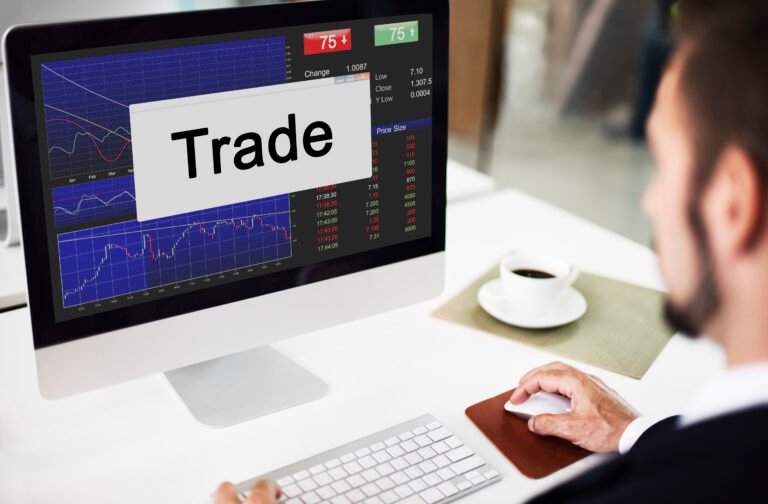What are Forex Orders?
Forex Order is a way a trader places a trade based on the needs and market conditions. Get a clear idea of these trading orders and how to place them.
Table of Contents
Forex Trading is a fun game when you know how to do so. Every trader in the market comes with different expectations and mindset. When the goals of every trader are different, then the method used for placing a trade should also be different. In this article, we will discuss one of the most important topics of trading, which is forex orders. Understanding its different types and how to place them will help you in implementing your trade efficiently.
What are Forex Orders?
What do you understand by the word order? Generally, we place orders in restaurants, cafes, and hotels.
Have you ever ordered pizza? Suppose you want to order a pizza; what will you say? One Large-size pizza with extra cheese and olives. That is your order. Right?
Forex Order is quite similar to the orders you place in restaurants. The only difference here is you are buying the pizzas to satisfy your hunger. Meanwhile, currencies are bought and sold to make money in forex.
So, just like pizza orders, forex orders are the instructions of a trader to the broker defining the entry, exit, stop loss, and take profit points to place trade according to the predefined requirements.
Now, why did you add instructions while buying pizza? To make it more delicious and according to your taste? Right.
Similarly, adding the instructions regarding the trade pivot points enables you to place trades based on your analysis and current market conditions. The main aim of these orders is to maximize the chances of profitability and manage the overall risk.
Types of Orders in Forex
Did all people buy the same kind of pizza or add the same kind of instructions? The answer is No. Everyone has their own taste based on which they add the food instructions.
Similarly, all traders are not the same, and they use different kinds of orders based on their trading style, risk-taking ability, financial instrument, time frame, and analysis.
Here are some popular forex order types with examples that will help you understand how to use and customize these trading instructions.
Market Order
The first in the list is market order. This type of order is used to exchange currencies at the current rate or the prevailing price.
Suppose you are on an E-Commerce Website, and you like one shirt of 100 USD. Using market order, you can buy the shirt immediately for 100 USD.
Now, let us look at the currency example. Suppose a trader wants to go long for a USD/JPY pair. The current ask price is 148.40. So, you can get the pair at 148.40 using a market order.
Limit Order
Have you ever waited for a sale to buy a product or service at a desired price? Suppose you want to buy a new iPhone but at below the current price.
What will you do in this case? You will wait for the sale of the e-commerce sites to buy it at a discounted rate.
Limit orders or pending orders also work in the same way. Traders in the forex market use limit orders to buy below and sell above the current market price or at their desired price.
Let us understand the buy and sell limit meaning in forex with an example. Suppose the current ask price of the USD/JPY pair is 148.40, and the trade wants to buy it at 142.50.
So, he will set the buy limit at 142.50. The trade will automatically executed when the price reaches at or below this level using the buy limit order.
And suppose a trader wants to sell the pair at 158.50, and the current bid price is 145.50. Then, he will set the sell limit of 158.50, and whenever the price reaches 158.50, the trade will execute automatically.
Stop Order
These are the orders that function to protect trade against unfavorable market conditions by limiting the profit and locking the loss. Have a look at different types of stop orders:
Buy-Stop Order
This order is used to stop your long position trade from executing till the price reaches a buy-stop level.
Sell-Stop Order
This order is used to stop taking a short position till the price reaches a sell-stop level.
Stop Loss Order
It is amongst the most popular forex orders used by traders to close a trade when the price is at the stop loss level. The main aim is to limit the losses when the market moves against your prediction.
Trailing Stop Order
This is a flexible order used to automatically adjust the stop loss level when the market moves in your favor.

Other Forex Orders
We have discussed the major Forex order types. However, there are many other types; let us briefly discuss them.
Good Till Cancelled
As the name suggests, these orders are active till the time the trader cancels them. A broker cannot cancel it at any stage of time.
One cancels the other
It is a two-trade order of opposite market conditions. Under this, one order is automatically canceled when the other is executed.
Suppose a trader wants to buy the USD/JPY pair if the price rises above the USD/JPY and sell it in the alternate scenario.
In this case, he can use the OCO order, which will automatically execute based on his plan. These are mainly used when you trade based on support and resistance indicators.
One triggers the Other
This order is exactly the opposite of the OCO Order. Under this, one order is automatically executed with the execution of another order.
Good for the day
This order type is quite clear with the name. Under this, the order remains active till the day and closed at the end of the day. Generally, a forex broker charges swap fees for holding a trade overnight. So, one can use these orders to avoid these charges.
Conclusion
There are many ways one can trade in the forex market. It is not possible for all traders to continuously watch their trades. That’s where Forex orders can help you. Your trade will automatically execute or end at your desired level using these orders.
In addition to this, these orders will also safeguard your profit and protect the trader from excessive losses. Many traders use the same type of order for all the trades.
However, it is better to understand different order types and use the best according to the market conditions for effective results.
FAQ
Do forex orders expire?
The expiry of forex orders depends on the order type. Some orders expire over a specific time while some do not.
What is forex used for?
Forex is a place to buy or sell centralized currencies where traders can make money from their value fluctuations.
How to buy forex currency?
Open an account with a Forex broker platform and deposit funds to buy Forex currency.
Can I order currency online?
Yes, currency can be ordered online in a decentralized forex market over a broker platform.
Who benefits from a forex order?
Forex traders can benefit from forex orders. They can use a diverse range of orders according to their requirements and manage risk efficiently.
Get Complete Forex Trading Assistance



